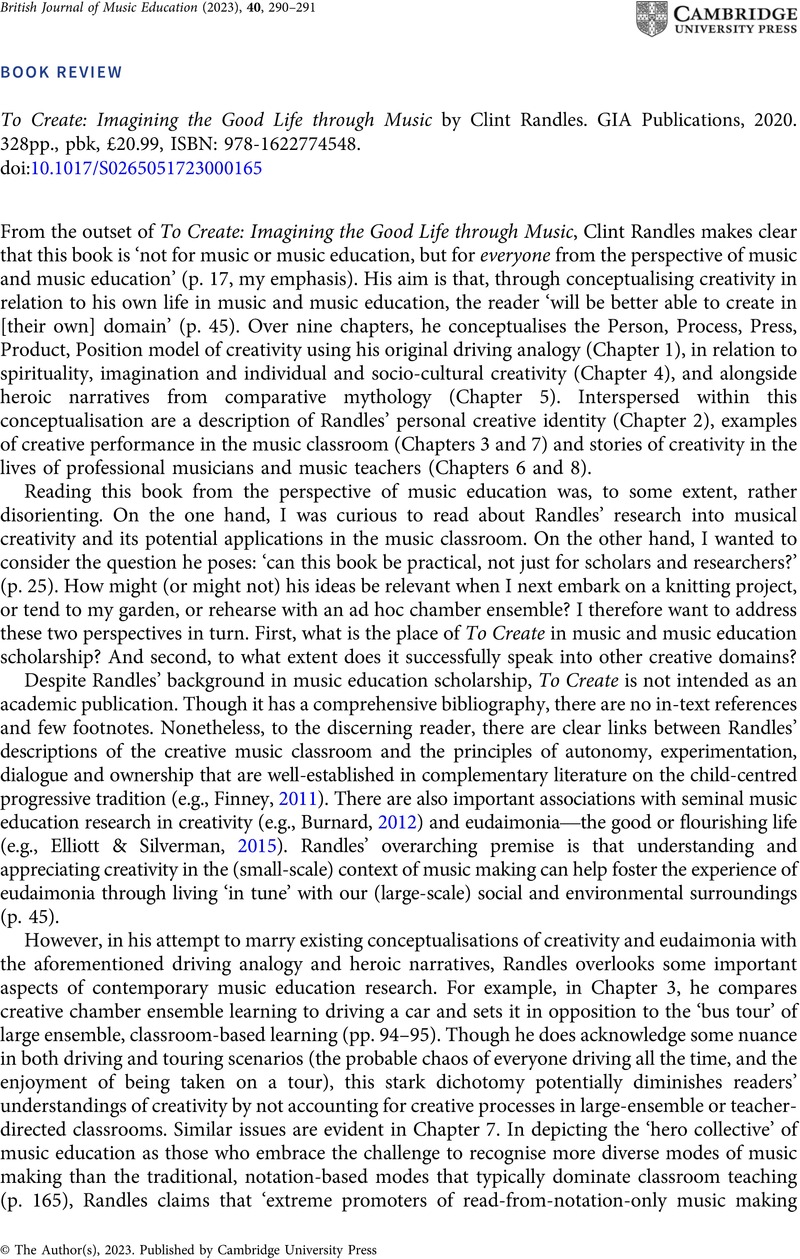No CrossRef data available.
Article contents
To Create: Imagining the Good Life through Music by Clint Randles. GIA Publications, 2020. 328pp., pbk, £20.99, ISBN: 978-1622774548.
Review products
To Create: Imagining the Good Life through Music by Clint Randles. GIA Publications, 2020. 328pp., pbk, £20.99, ISBN: 978-1622774548.
Published online by Cambridge University Press: 22 June 2023
Abstract
An abstract is not available for this content so a preview has been provided. Please use the Get access link above for information on how to access this content.

- Type
- Book Review
- Information
- Copyright
- © The Author(s), 2023. Published by Cambridge University Press
References
BURNARD, P. (2012). Musical Creativities in Real World Practice. Oxford University Press.CrossRefGoogle Scholar
ELLIOTT, D. J., & SILVERMAN, M. (2015). Music Matters: A Philosophy of Music Education (2nd ed.). Oxford University Press.Google Scholar
FINNEY, J. (2011). Music Education in England, 1950–2010: The Child-Centred Progressive Tradition. Routledge.Google Scholar
HESS, J. (2017). Critiquing the critical: The casualties and paradoxes of critical pedagogy in music education. Philosophy of Music Education Review, 25(2), 171–191. https://doi.org/10.2979/philmusieducrevi.25.2.05
CrossRefGoogle Scholar
NIKNAFS, N. (2021). Ingratitude and the politics of obligation: The problem of (un)mutual recognition in music education. In Kallio, A. A. (Ed.), Difference and Division in Music Education (pp. 11–25). Routledge.Google Scholar



